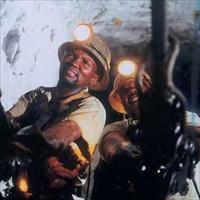SOUTH AFRICA: Miners demand safety first

South Africa's Human Rights Commission (SAHRC) has called on the mining industry to address safety concerns after 240,000 mine workers downed tools this week in the country's first strike over safety standards.
The commission's intervention followed the release of statistics that put the death toll among miners at 200 this year, mainly caused by rock falls and explosions underground.
According to the Chamber of Mines of South Africa, the industry employers' organisation, 199 miners were killed in 2006 and 202 died in 2005. However, their figures showed that the number of deaths has more than halved since 1996, when 463 miners were killed in South African mines. The industry employed 458,600 miners in 2006.
Many South African mines have remained unchanged for decades, but the surge in world prices for gold and other minerals has led to once unprofitable mines becoming profitable again, and consequently reopening.
"The Commission is of the view that it is not an adequate response to continually refer to the fact that mining is dangerous. The truth of the matter is that mining in South Africa is [allegedly] more dangerous than elsewhere in the world, and the number of deaths in the mining industry in South Africa has actually increased over the past year," SAHRC said in a statement.
"Occupational health and safety issues are human rights issues, and the Commission recognises the very real concerns of mine workers in South Africa," it added. "It appears that business is failing to make the necessary connection between mine workers' safety concerns and corporations' human rights obligations."
The National Union of Mineworkers, one of the country's largest unions, called out its members on 4 December in its first nationwide one-day strike since the end of apartheid in 1994; it warned the government and industry bosses that it would not allow what it called a "mining genocide" to go unanswered.
"If the big companies do not do anything to improve safety, we will be back on the streets again; we will stop the mines with a two- or three-month strike," union spokesman Lesiba Seshoka told a 40,000-strong gathering of protesters that marched through central Johannesburg.
Government steps in
South Africa is home to some of the world's largest gold, platinum and manganese ore reserves. The country's diamond mining industry is also the fourth largest in the world, and minerals constitute between 15 and 20 percent of the gross domestic product.
The strike hit production at about 700 mines across the country. The largest stay-away was at the Kloof gold mine, about 60km southwest of Johannesburg in Mpumalanga Province, where 76 percent of the workforce was absent.
Mine safety has been in the spotlight since an accident in October at the Elandsrand mine near Johannesburg, owned by Harmony Gold, which left 3,200 miners trapped underground for between 24 and 48 hours. As a result, South African President Thabo Mbeki ordered a safety audit of the country's mines.
A statement released by the Department of Minerals and Energy last week indicated that the safety audit, which is due to start this month, would be in two parts: a component to determine compliance with legal requirements, and a technical audit of installations and practices at mines.
"The outcome of these audits will give an indication of the extent to which mines comply with health and safety requirements, and will also help mines develop programmes of action to improve their health and safety," the department said.
 Back and Next - Back and Next
Back and Next - Back and Next See Also - See Also
See Also - See Also